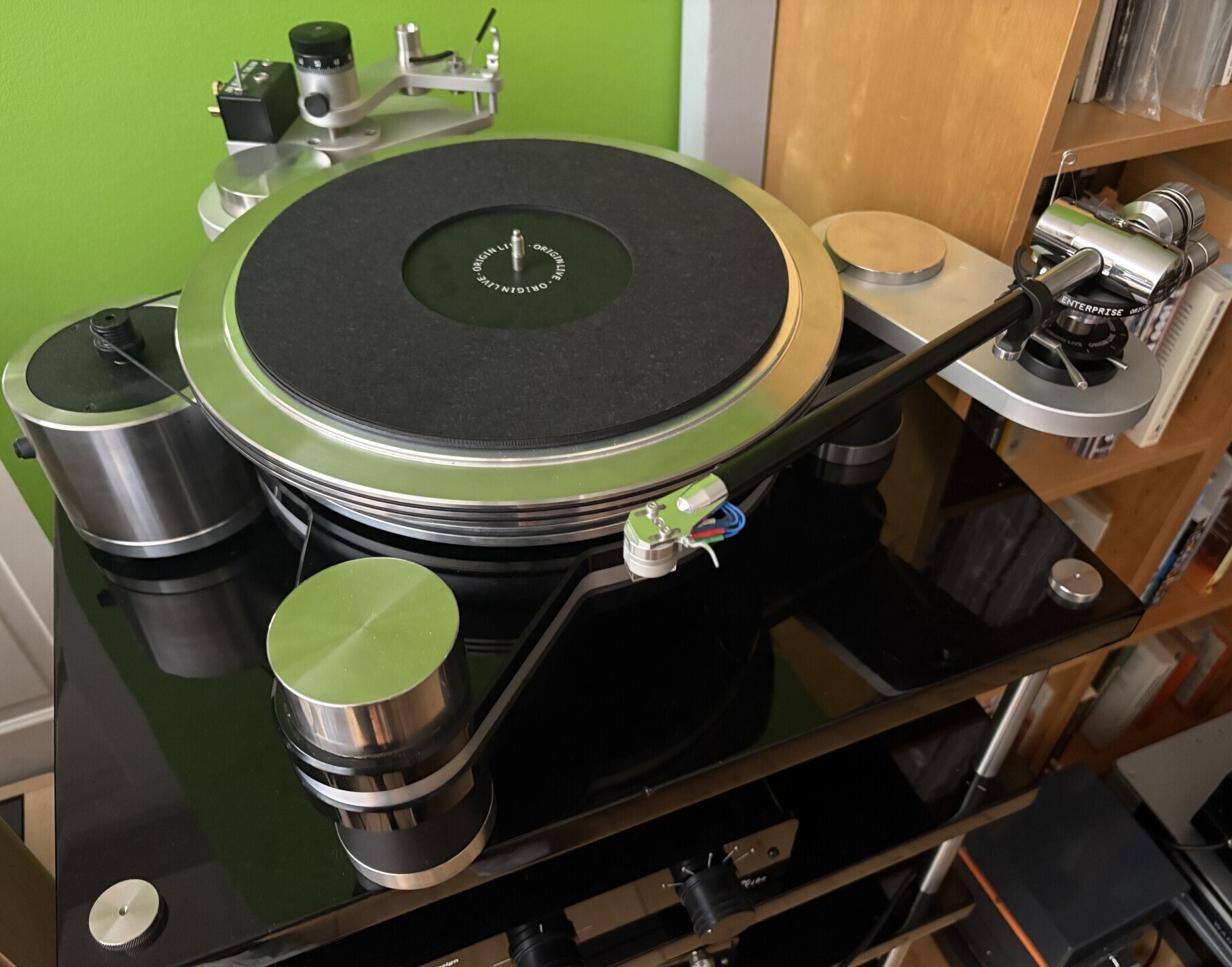Installing the Enabler is straightforward but, any sort of comparative listening is going to require some considerable care. You need to maintain consistent VTA and VTF across both the original and the new set up. Reinstalling the cartridge also means adjusting the alignment and that is less than straightforward. The soft elements of the Enabler are slightly grippy and make minute angular or overhang adjustments frustratingly difficult to achieve: overhang becomes a continual case of over compensation as you keep bracketing the target point on the protractor, while offset adjustments almost inevitably throw off the overhang you’ve already achieved. Once you are happy with alignment and arm-height, the next thing to look at is azimuth. The soft layer between the cartridge and the headshell means that the pick-up can be canted by differential bolt pressure. Just to add another variable into the mix, the tightness of the bolts also impacts the sound: too tight and you kill it completely, with a dull, sat on quality; too loose and things get vague, upper register transients can get fuzzy and you risk the cartridge moving. All told, it makes direct comparisons difficult at best. A better approach is simply to install the Enabler and then work towards the best sound you can, assessing it on its own merits rather than in the context of a direct AB face-off.

With the Enabler sandwiched between the Fuuga and the enterprise mounting platform, the pairing certainly produced more harmonic information, longer tails to notes, a wider, airier soundstage and an attractively fluid sense of rhythmic continuity. Walton’s Death Of Falstaff (English String Music, Marriner and the ASMF – EMI ASD 2831) gained a sumptuously elegiac quality, plangent, swelling strings flowing together to flesh out and support the solo violin. Playing the Playful Pizzicato from Britten’s Simple Symphony, the orchestral spread is wider, the tonal separation of instruments more natural and distinct. When the cellos bounce their bows, the action is immediately identifiable; it just sounds right. Ólafsson’s piano regains its missing layers and scale
Which sounds like the Enabler is overcoming exactly the issue I’d identified? Well – yes and no. These swings come with some equally obvious roundabouts. With the Enabler in play, the sound is softer and less immediate, with muted dynamics and significantly less urgency. The soundstage might be wider, but it loses depth, while the music is robbed of the drive and momentum that made it so exciting and engaging. Kremer’s instrument gains harmonic identity and a beautiful tone, but his lines are smoothed out and lose the angular, incisive brilliance that sparks the performance. At least with the Fuuga, in musical terms, the Enterprise has more to offer without the enabler in place. Does that mean you should leave it in the box, along with the Ortofon stylus balance? Well, that depends…
As impressive as the Fuuga/Enterprise pairing sounds, it doesn’t necessarily extract the best from both parties. Nor does adding the Enabler. But that doesn’t make the Enabler a failure. It just didn’t fix this particular combination. What the findings actually suggest is the use of an alternative cartridge in this system – and the fact that the results with the enabler will be both cartridge and system/set-up dependent. Switching to the lighter and rather more compliant Lyra Etna Lambda proved the point. At 16.4g (including titanium mounting hardware) and 7cu compliance, the Fuuga sits towards the edge of the optimum arm-cartridge resonance window, calculated at between 10 and 11Hz given the near 21g effective mass of the 12” Enterprise. The Lyra’s more manageable numbers (10.5g and 12cu) deliver a solid 8Hz. Despite the stability and confidence with which the Fuuga tracked, it was definitely flaunting its dynamics at the expense of harmonics and texture. The Etna offered a less spectacular but far better balanced overall presentation, still not shy on dynamics but far more sophisticated in terms of micro-dynamic and textural detail, tonal palette and focussed dimensionality. On the one hand, the ability of the Enterprise to deal with the Fuuga’s prodigious mechanical output was impressive. On the other, it clearly drew more out of the Etna, better reflecting the cartridge’s capabilities.

